All products featured are independently chosen by us. However, SoundGuys may receive a commission on orders placed through its retail links. See our ethics statement.
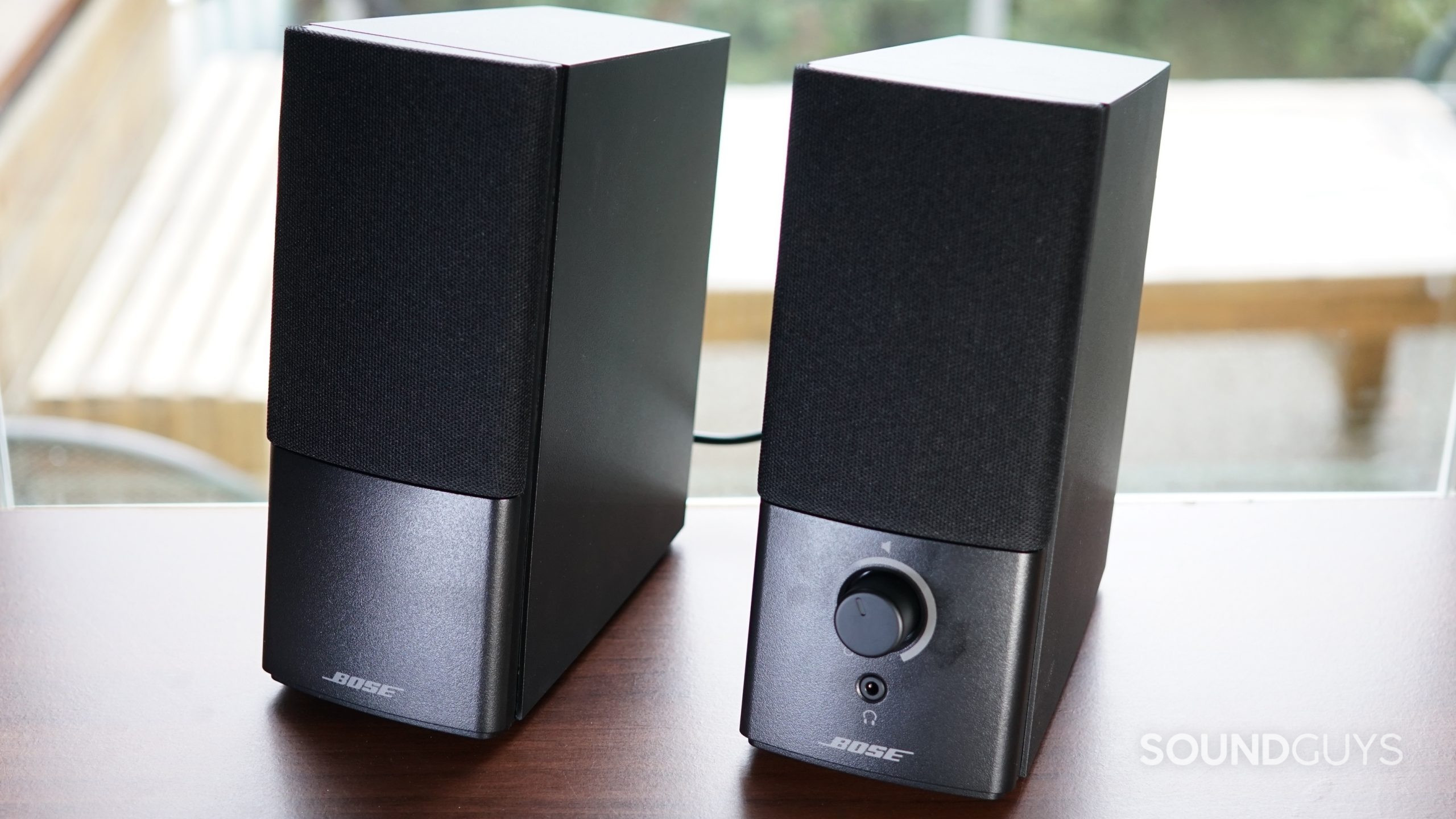
Bose Companion 2 Series III review
Published onSeptember 5, 2023
Bose Companion 2 Series III
The Bose Companion speakers have been among the most common desktop speakers for a very long time. The third generation model we’re looking at today has been on the market for a solid decade, but old can still be gold. These are workhorse products with a dead-simple interface — just plug it in, turn up the volume, and you’re set. However, the audio industry is built on bells and whistles, and technology has progressed a lot since 2013, so is the Bose Companion 2 Series III still worth it?
Editor’s note: this review was updated September 5, 2023, to answer FAQ.
What you need to know about the Bose Companion 2 Series III
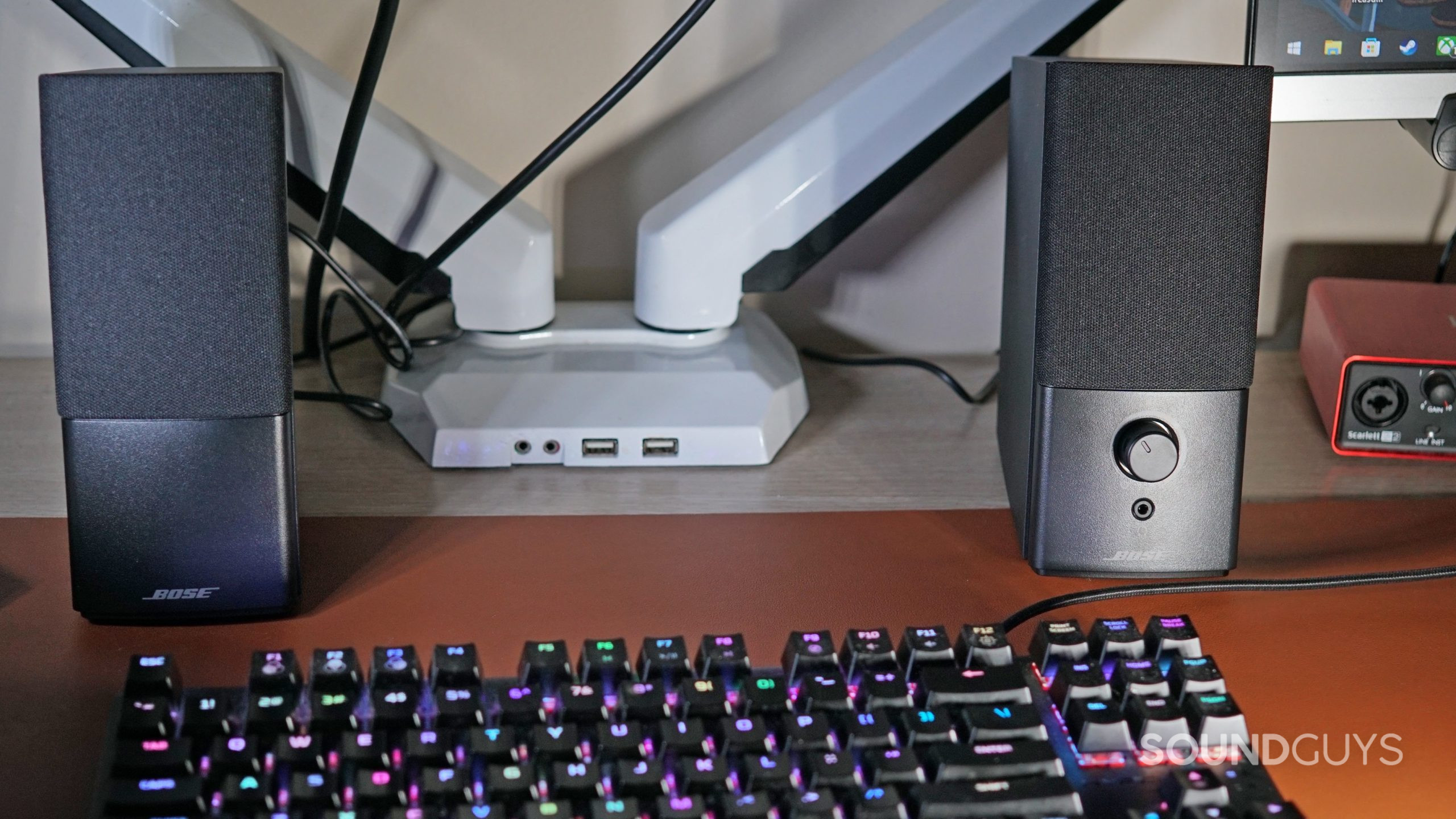
- Bose Companion 2 Series III: $149 USD / $179 CAD / €149.95 / £109.95
The Bose Companion 2 Series III is a very simple product. There’s no software or extra features — this is a pair of powered desk speakers, and that’s it. The right speaker (the primary one) features a 3.5mm headphone jack for headphone output, and volume knob that will shut off the speakers if you turn it all the way to the left.
The Series III model of Companion 2 speakers feature a pretty different look to the previous generation. Gone are the grey metal speaker grilles, in favor of a black plastic front with fabric-covered grilles protecting the drive units. The size and shape is basically the same, so if you’re looking for an update, these speakers won’t require any reorganizing of your setup.
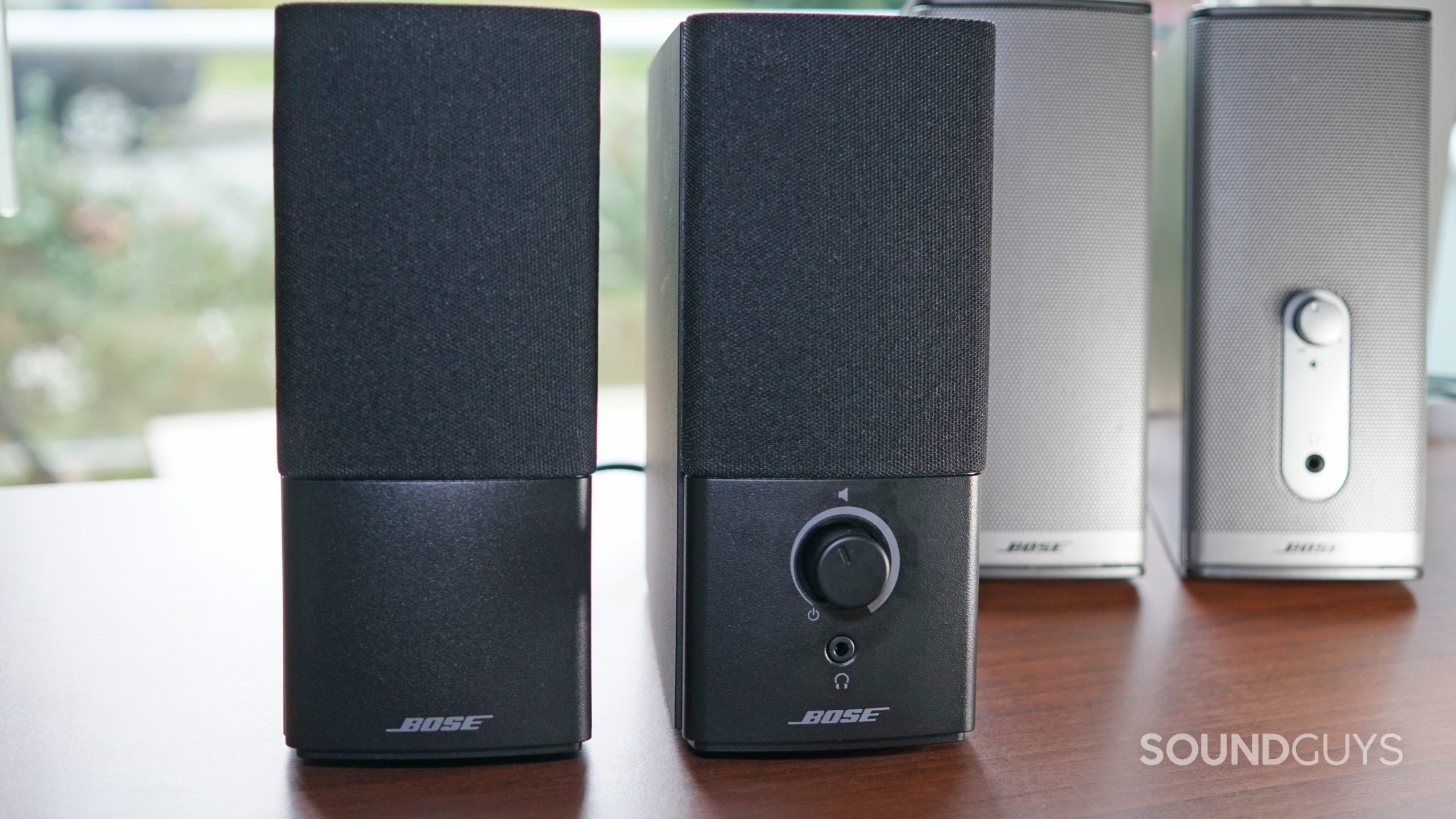
Whether the new aesthetic is an improvement comes down to personal taste, but there aren’t many more differences between the current model and its predecessor — at least on the front. On the back, the connector situation is definitely changed. Instead of red and white RCA connection for connecting the speakers to the primary audio source, there’s now a regular 3.5mm TRS socket. Connecting the left speaker to the right no longer utilizes a 3.5mm jack, and instead uses a cable that terminates in a more secure proprietary plug. There’s also one notable addition: a 3.5mm auxiliary input jack, so you can plug in a second audio source, like smartphone or tablet, to play over the speakers.
What’s good about the Bose Companion 2 Series III?
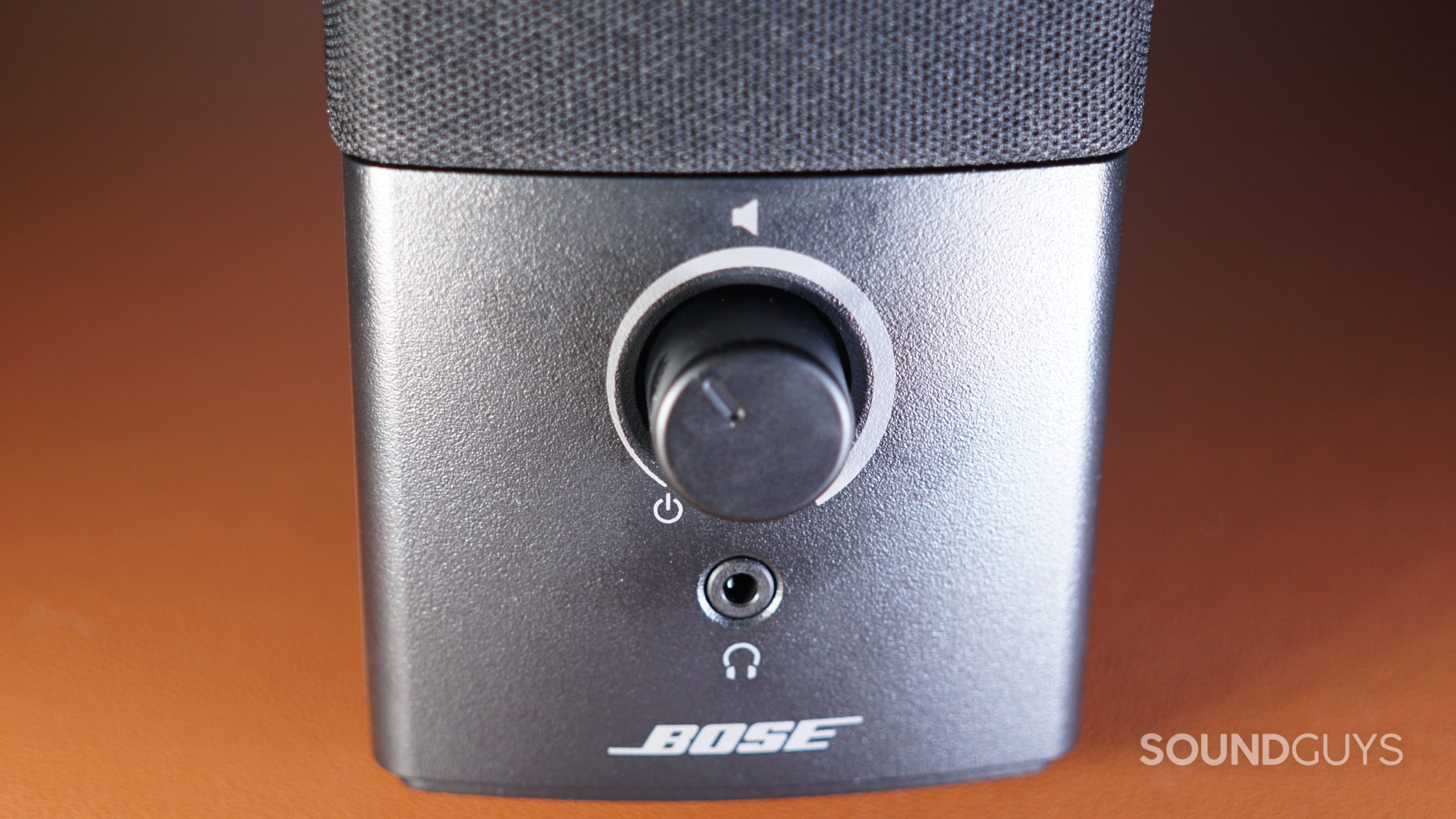
This is a simple product, so let’s start with the most important part: The Bose Companion 2 Series III sounds very nice. For a pair of desktop speakers, these are extremely versatile. Blasting a rock song like Master Exploder by Tenacious D, the acoustic strumming, Jack Black’s shrieking vocals, the bass guitar, and the electric guitar solo all come through very clearly.
There’s no dedicated woofer, so low-end sound doesn’t have any sort of rumbly quality, and in general bass is a little quiet — something common to most desktop speakers — but low end sounds like the bass track in Separate Ways by Journey, or the bass drum that drives the beat in Ante Up (Feat Busta Rhymes, Teflon & Remi Martin) by M.O.P. are still plenty noticeable. Turning the volume up all the way, I don’t hear any noticeable distortion, either.
It’s also really nice how simple it is to use the speakers. The volume knob has a satisfying degree of resistance, and the click it terminates in feels pretty nice. This might seem like a strange detail to spend a sentence on, but there really isn’t much more to think about when assessing what it’s like to use the Companion 2 Series III.
Say what you will about the redesigned aesthetic, I think it’s nice. It’ll also blend in well with lots of different desktop environments, which seems like a positive to me.
What’s not so good about the Bose Companion 2 Series III?
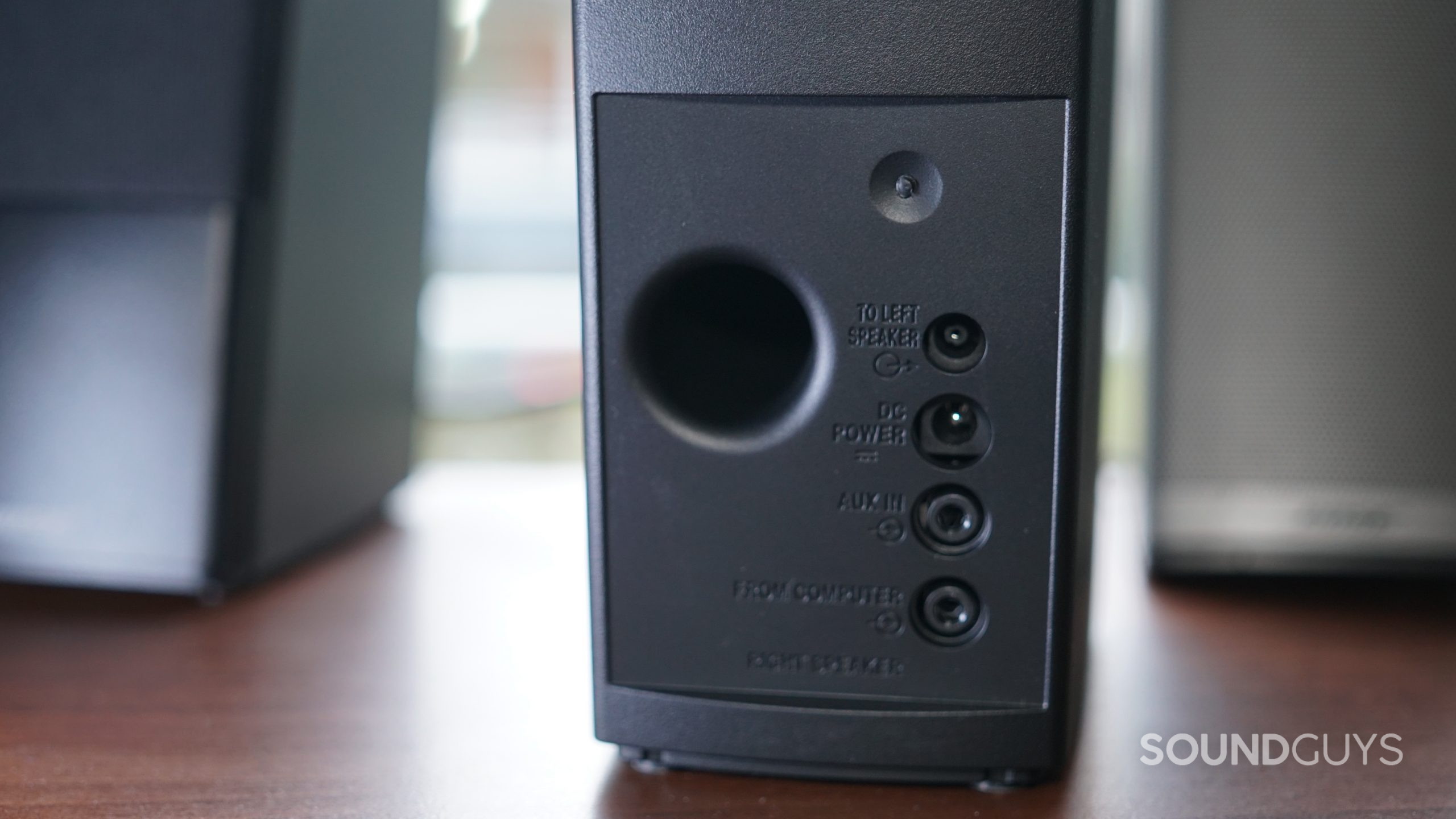
There are two things really worth bringing up here. First, the Bose Companion 2 Series III would benefit from more substantial bass output. The speakers sound great, but having a little extra oomph would go a long way. Studio monitors or party speakers, these are not.
Second, this is a pretty old product, and it’s sad to say, but you can’t really rely on 3.5mm to connect to everything anymore. Having a digital connection like USB for plugging into your computer, or even Bluetooth for connecting additional input devices would substantially open up compatibility options. You’ll never hear me complaining about having access to a headphone jack, but the bottom line is a lot of people need more than that to connect the devices they use every day.
Bose Companion 2 Series III specs
There’s not a ton to keep track of with the Bose Companion 2 Series III, but it’s always nice to have a table with all the specs:
| Bose Companion 2 Series III | |
|---|---|
Size | 190 x 80 x 150mm (Individual speaker) |
Weight | 1kg (right) .8kg (left) |
Wired audio connection | 3.5mm headphone jack, 3.5mm output, 3.5mm input |
Controls | Dial |
Connector | 3.5mm |
Price | $149 USD |
Bose Companion 2 Series III review: Should you buy it?
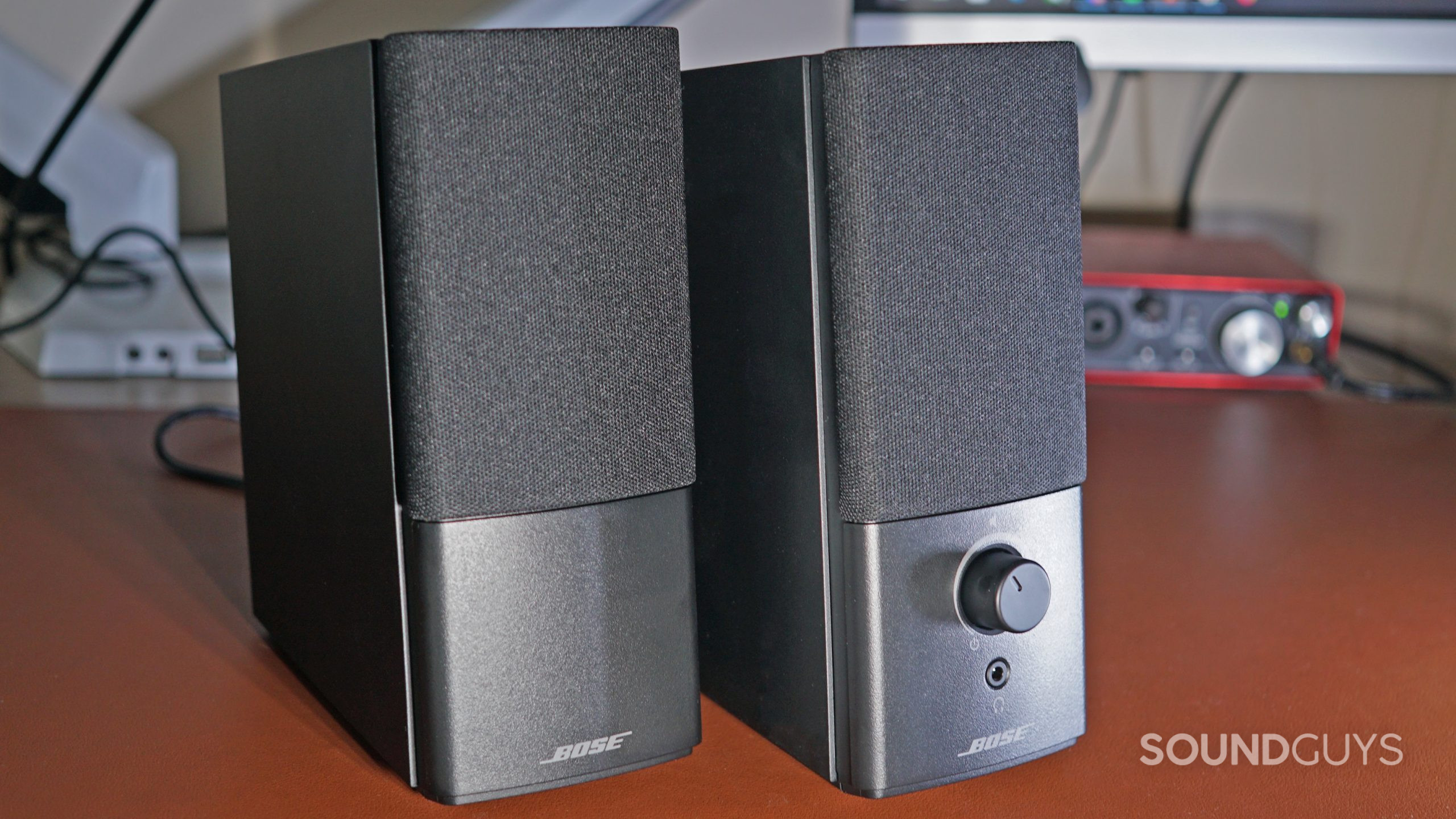
It was true a decade ago, and it’s true now: If you’re on the hunt for a basic pair of desktop speakers, it is pretty hard to do better than the Bose Companion 2 Series III. Some speakers might be louder, some will have more options, but few will manage to balance quality and ease of use so well for this price. Compared to other good speakers, these are extremely reasonably priced, and they should be on anyone’s list of considerations if you’re on the hunt for an everyday workhorse.

Frequently asked questions about the Bose Companion 2 Series III
You can only buy the Bose Companion 2 Series III in black, unfortunately.
At time of writing, no news of a follow-up to these speakers has come about. After 10 years, it sure feels just about due. We’ll update this review if anything comes out.
You can connect the Bose Companion 2 Series III to a TV, but these aren’t designed to replace a soundbar or home theatre, because they’re designed for near field listening at a desk.
You will need a TV with RCA outputs and a cable that goes RCA male to 3.5mm TRS male, or an adapter that allows you to connect your standard RCA cable in and either lets you connect a standard AUX cable out, or has a 3.5mm male on the other end. You’ll plug the RCA outs to your TV and use the AUX port on your Companion 2 Series III. If you’re stuck, this is fine, but it’s definitely not going to give you the most out of your media.